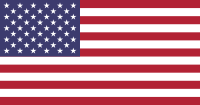One thing I’m grateful for this Thanksgiving holiday is that I’m not traveling in the States. Already the busiest travelling time of the year, as people take to the road or the skies to gather for the traditional turkey dinner and equally traditional tense family situations, this year’s Thanksgiving is likely to take travel misery to new heights.
It’s all because the new security measures by the Transportation Security Administration (the folks in blue gloves at US airports who x-ray your luggage and invite you to walk through metal detectors) have sparked outrage among the traveling public. Or, at least, among a very vocal element of the traveling public.
The measures in question are the new full-body x-ray machines that can peer beneath your clothing and the “enhanced pat-downs” where TSA agents gain a passing familiarity with your nether regions. The outrage comes from folks who apparently want no part of either of these procedures. The outrage was really unleashed two weeks ago when a passenger, John Tyner, “opted out” of the x-ray scan, apparently over his concerns about the safety of the scan. He then refused to have his groin area patted down by a TSA agent saying, “If you touch my junk, I’ll have you arrested.” He was not allowed to board his flight and escorted out of the airport. And, of course, it was all videoed and shared on YouTube.
Supporters of Tyner have called for a “National Opt Out Day” today, encouraging air travelers to refuse to be scanned by the new equipment, and kicking off a huge storm of news reporting, blogging and loud gnashing of teeth. It will be interesting to see how many air travelers actually jump on the Opt Out bandwagon and choose the more time-consuming and invasive physical pat down instead of the faster, more convenient hands-off x-ray scan.
To me, it seems like a tempest in a teapot, and an example of how American anger these days seems to jump in an instant from one outrage to another. I can understand that some people may have health concerns over a full-body x-ray, no matter how low the dosage might be – and besides, the hard-core scanner skeptics don’t trust anything the government does anyway. What I have a harder time comprehending is the outrage over privacy, the fear that an anonymous TSA agent sitting in a booth somewhere is inappropriately admiring a mannequin-like image of myself. Maybe I’m not bashful – or vain – enough to be bothered by this.
Once, about twenty years ago I was flying from Heathrow with some Finnish colleagues when a security officer pulled me out of the line for closer inspection. In those much more innocent days, this probably entailed only rummaging through my carry-on bag, or maybe even a light pat down. I don’t exactly recall. In any case, my travel companions were outraged by this, on my behalf. They thought, “How dare he do that to you.” I, on the contrary, didn’t care. My attitude was that if it helps keep bombs off the plane, I’m not bothered by a little extra scrutiny from the security folks.
Apparently, a growing number of Americans don’t share that attitude, or at least not anymore. After 9/11, people learned to accept removing their shoes in the security line, taking out their laptops, having their jars of peanut butter confiscated (it happened to me), all in the name of preventing another terrorist attack. Yet, apparently, for some people there are limits, and now that limit seems to be letting someone see you naked or run their hand all the way up your inner thigh.
Unsurprisingly, considering the mood of the country lately, the discourse over this issue has turned ugly. Many commenters on various blogs I’ve read have compared the TSA agents to perverts and Nazis. One commenter, taking umbrage at the erosion of his 4th Amendment rights, stated he would rather see his family blown up in an airplane bombing than to submit to the enhanced security measures of the TSA.
I know Internet commenters as a group don’t represent society’s best and brightest (God I hope not). But, with sentiments like these, it’s impossible to take the outrage of these people seriously or to see Opt Out Day as a well-thought-out protest. What is true, however, is that fear of al-Qaida has forced Americans to make some uncomfortable concessions. I, for one, am not that uncomfortable with a little backscatter x-ray. Or, even a polite enhanced pat down, if it comes to that. But, maybe that’s my limit.
Safe travels, everyone!

